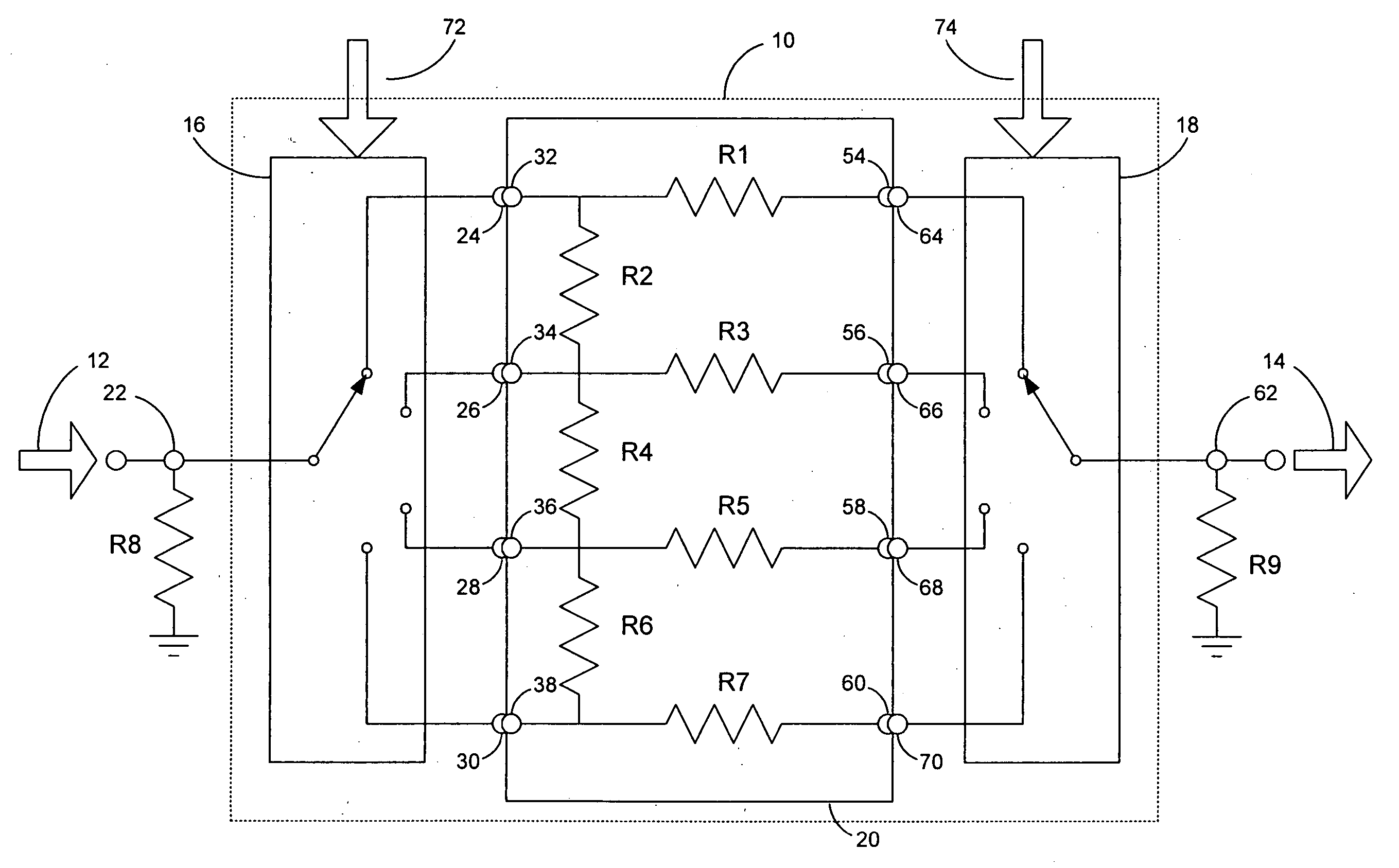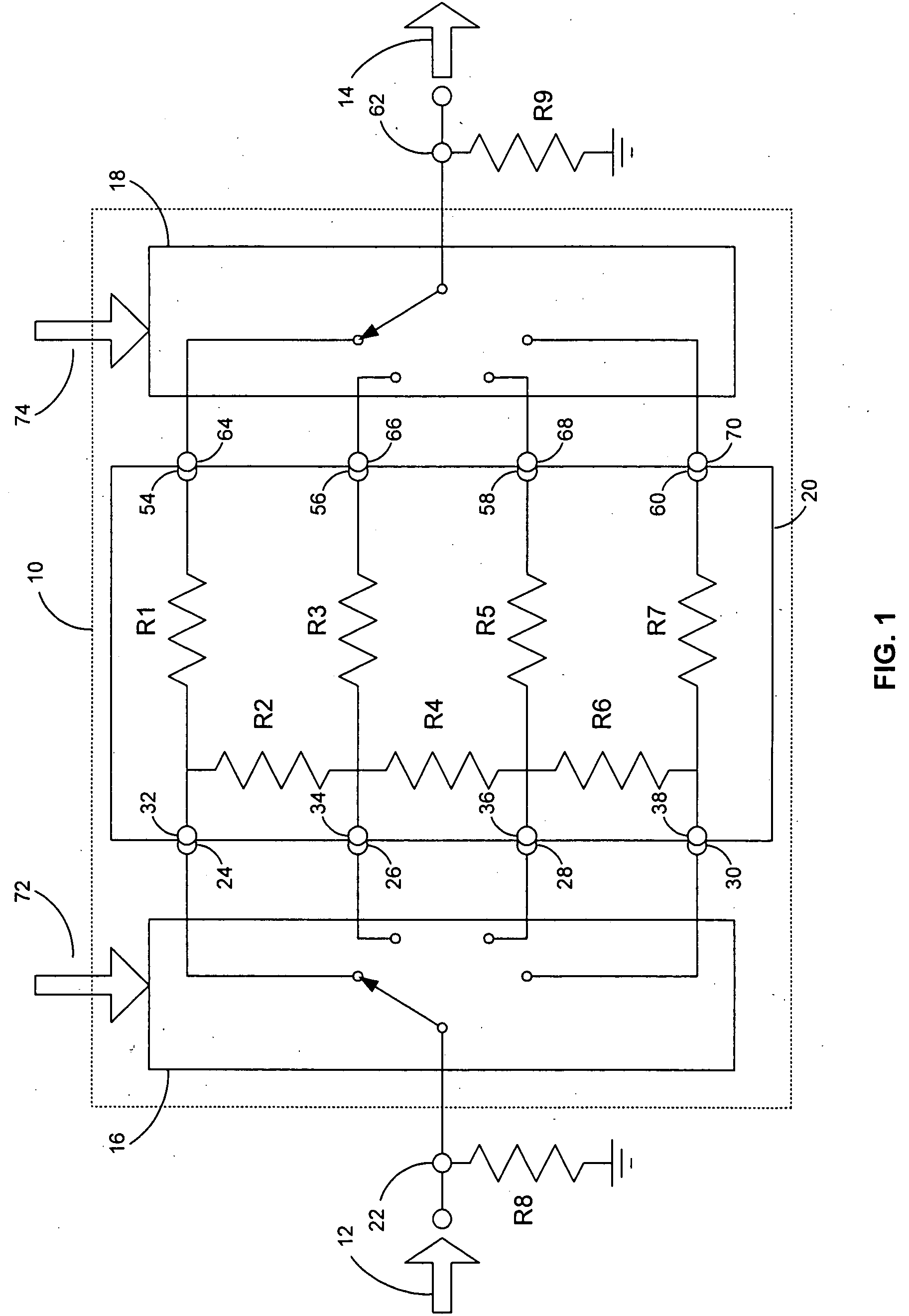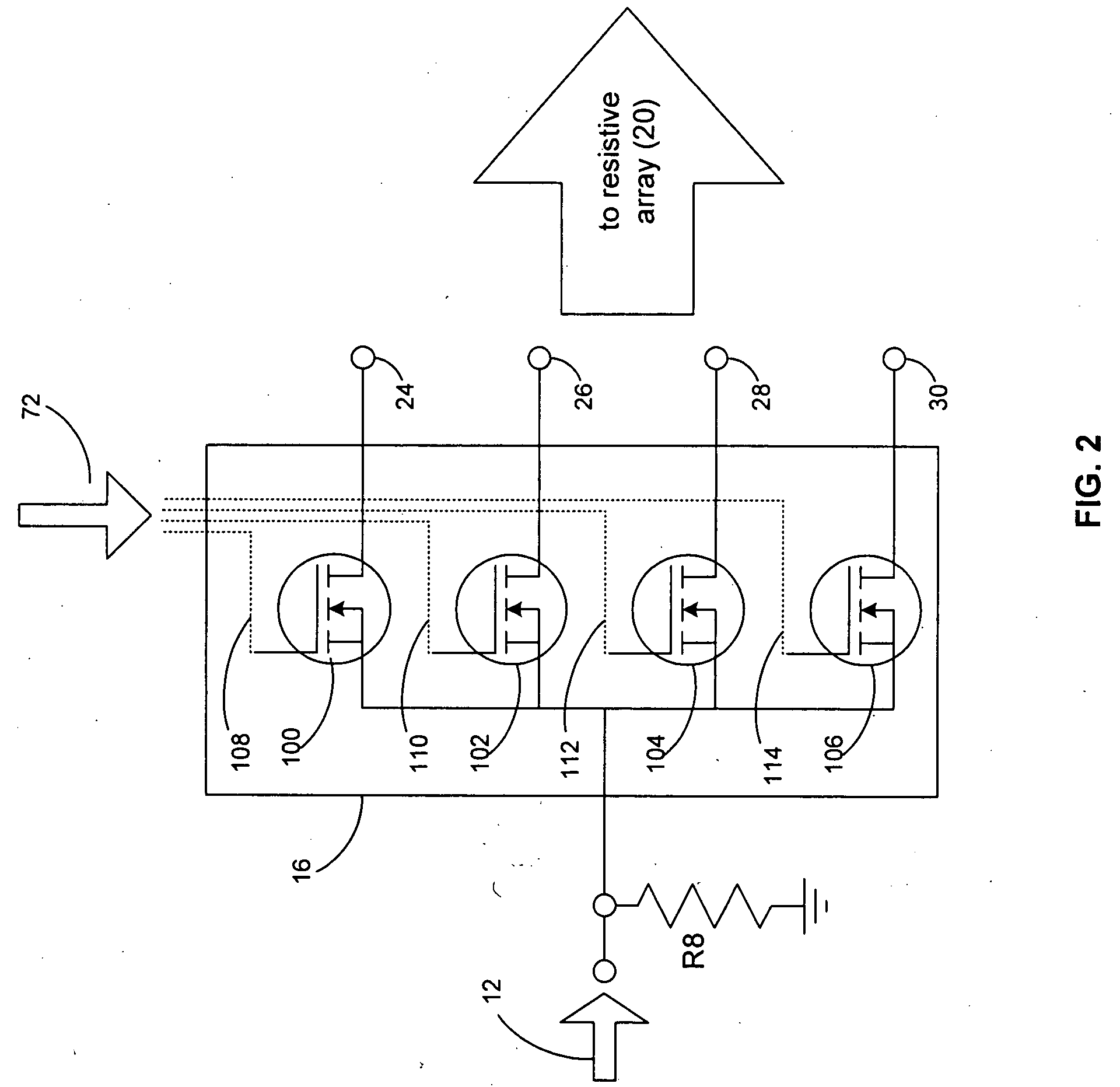High-resolution variable attenuation device
a variable attenuator and high-resolution technology, applied in the field of attenuators, can solve the problems of increasing the parts count of the attenuator unit, requiring time and cost calibration, and providing non-linear performance of voltage-variable and pin-diode attenuators, and achieve the effect of uniform attenuation steps of the input signal
- Summary
- Abstract
- Description
- Claims
- Application Information
AI Technical Summary
Benefits of technology
Problems solved by technology
Method used
Image
Examples
Embodiment Construction
[0029] Referring to FIG. 1, there is shown a variable attenuation device 10 for receiving a input signal 12, such as an RF (i.e., radio frequency) or microwave signal and providing an attenuated output signal 14. (030) Variable attenuation device 10 includes a first switch 16, a second switch 18, and a resistive array 20. As will be discussed below, by controlling the position of switches 16 and 18, the level of attenuation experienced by input signal 12 is controllable.
[0030] First switch 16 includes an input terminal 22 and four selectable output terminals 24, 26, 28 and 30. Output terminals 24, 26, 28 and 30 are coupled to the input nodes 32, 34, 36 and 38 of resistive array 20.
[0031] Resistive array 20 includes multiple resistors R1-R7 that provide resistive paths between input nodes 32, 34, 36 and 38 and output nodes 54, 56, 58 and 60 of resistive array 20. These resistors may be connected between an input and an output node (e.g., resistor R1), between input nodes (e.g., res...
PUM
 Login to View More
Login to View More Abstract
Description
Claims
Application Information
 Login to View More
Login to View More - R&D
- Intellectual Property
- Life Sciences
- Materials
- Tech Scout
- Unparalleled Data Quality
- Higher Quality Content
- 60% Fewer Hallucinations
Browse by: Latest US Patents, China's latest patents, Technical Efficacy Thesaurus, Application Domain, Technology Topic, Popular Technical Reports.
© 2025 PatSnap. All rights reserved.Legal|Privacy policy|Modern Slavery Act Transparency Statement|Sitemap|About US| Contact US: help@patsnap.com



